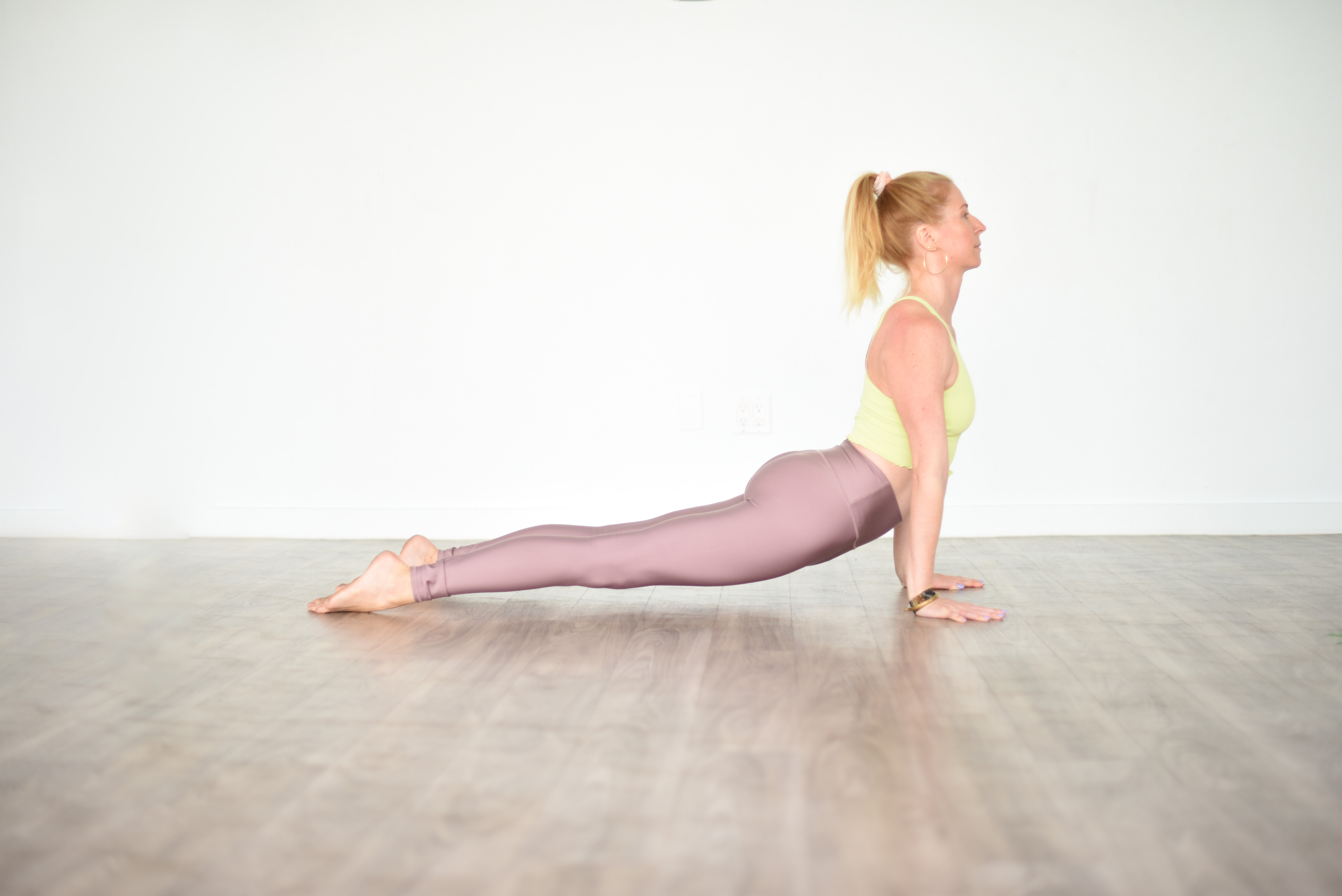
Introduction to Vinyasa Flow Yoga
Yoga is a highly beneficial practice that people all over the world are taking part in. Of the many styles of yoga that are practiced, Vinyasa Yoga is one of the most common. You’ll see it described as vinyasa or flow on class schedules. But what exactly is vinyasa yoga?
Vinyasa yoga refers to a style of yoga where breath and movement are linked. It is often a sweaty and physically challenging class however it can be catered for beginners as well. It’s important that every movement is linked with either an inhale or an exhale.
History of Vinyasa Yoga
Vinyasa flow yoga came from Ashtanga Vinyasa, a style created by a man named K Pattabhi Jois. He was the student of Krishnamacharya who is widely considered to be the father of modern yoga. The Ashtanga system of yoga is a series of six set sequences that students learn in a progression.
Jois taught his system to westerners and eventually teachers in America were creating their own vinyasa yoga sequences. They were inspired by the set sequences of the ashtanga system however the vinyasa yoga sequences were more accessible to a wider range of students.
Ashtanga Yoga was originally created for fit teenage boys as a physical education activity. Many of the moves require an enormous amount of strength and flexibility that are too acrobatic for even the most physically fit adult. Vinyasa was created to deliver the benefits of Ashtanga to a broader student base.
Ashtanga Yoga vs. Vinyasa Yoga
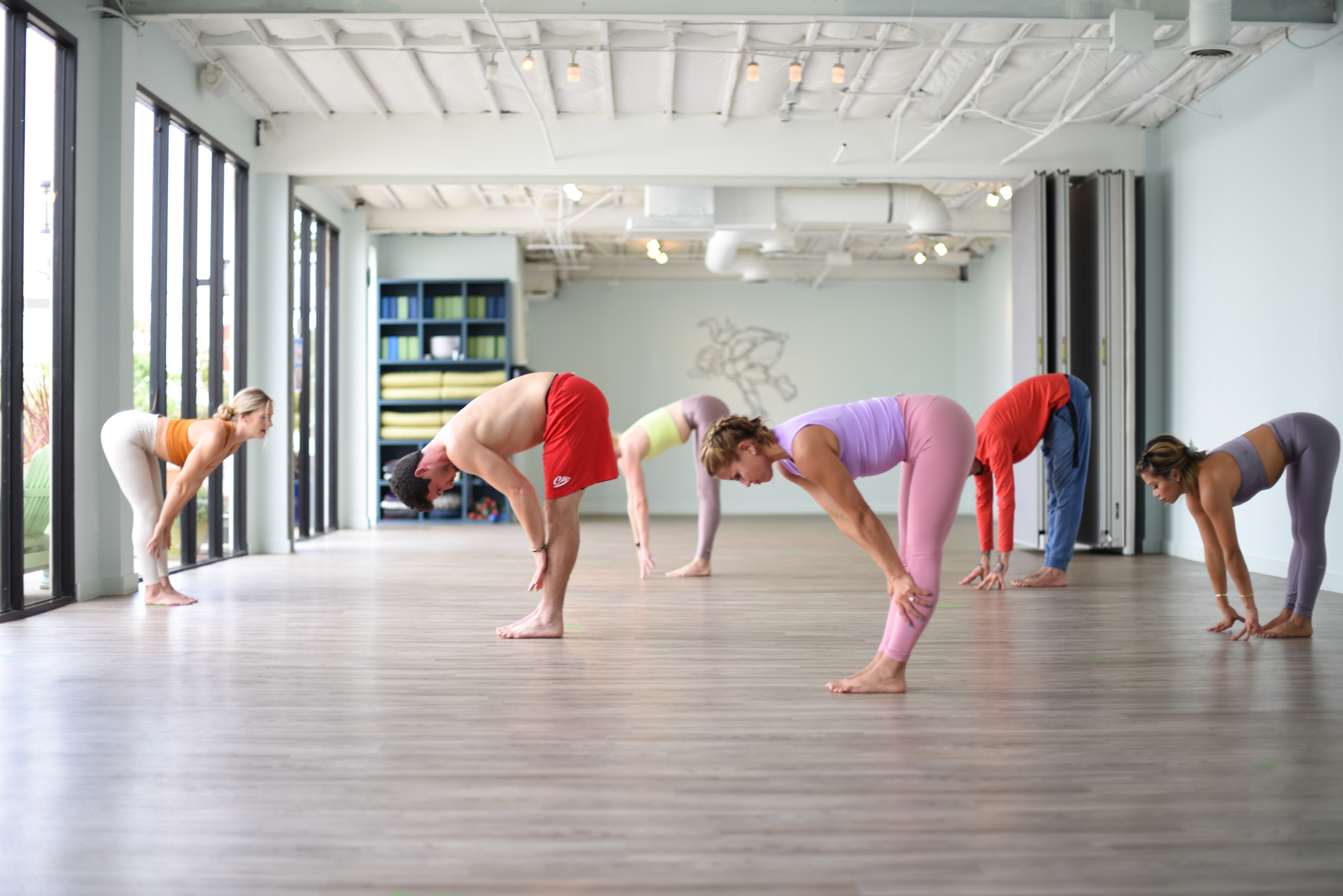
Firstly, the biggest difference between Ashtanga and Vinyasa is that the Ashtanga is a series of set sequences. This means that the sequence of postures is the same every single time you practice. There are six series in the Ashtanga system that get progressively more challenging.
The benefits to a set sequence is that once you have it memorized, you can flow through the movements without having to think about what is coming next. As a result, students focus on other things such as the breath, gazing point (drishti) and bandhas (energetic locks).
The sequencing in vinyasa is left up to the teacher. Ashtanga classes are physically advanced and many people have a hard time doing such a challenging class. With vinyasa flow yoga, the sequence can be catered to everyone from beginners to people with more experience.
3 Tried and True Reasons to Practice Vinyasa Yoga
It’s Fun
People often complain that they don’t want to do yoga because “it’s boring.” Vinyasa yoga is a smooth flowing style that feels like a dance. Teachers will often play a really fun combo of music to make the experience more interesting.
Expect to hear a wide variety of tunes from hip hop to even some good old rock and roll. The movements are often challenging and build enough heat to leave you sweating all over your mat. There is no such thing as a boring vinyasa class!
Balance Strength with Flexibility
Vinyasa yoga poses are sequenced together in a progression. The poses will gradually get deeper and harder throughout the class as the body warms up and your internal heat grows. Each new movement builds on the last and require a balance of both strength and flexibility.
Students must activate all the muscles in the body, especially in the core, to execute most of the movements. As you warm up and move deeper into areas such as the hip flexors and the hamstrings, the muscles remain active even as you stretch them.
Activating muscles while performing actions that stretch them create balance. The activation not only strengthens but provides a boundary that will keep you from over-stretching. It’s functional fitness that promotes joint longevity and keeps you from getting injured.
Learn How To Breathe
We all know how to breathe right? We’re doing it all day and night. Breath is both a voluntary and involuntary action. You don’t have to think about breathing, it just happens on its own. However you can make it more conscious, and we do this when we practice yoga.
First of all, deepening the breath and maintaining a steady rhythm is highly beneficial for many reasons. It slows down heart rate, lowers blood pressure, releases the good hormones instead of stress hormones (aka cortisol), and it helps all of our physiological systems to perform in an optimal way.
In our go go go lifestyle we are in need of constant stimulation. As a result, sitting still and breathing deeply is difficult. It’s too much of a departure from our normal hyper drive mentality and people get fidgety and frustrated. Vinyasa yoga is an excellent way to address this.
Every single movement in a vinyasa class is linked with either an inhale or an exhale. Inhale reach up, exhale fold forward, and so on. When one focuses on this synergy of breath and movement, the mind turns off and we tune in to the present.
The constant, seamless flow of these sequences are stimulating enough to hold our attention for an hour or even longer. During this time, we are breathing deeply in a steady rhythm. Our body goes into healing mode even during what can often be a very physically demanding experience.
Vinyasa is a meditation in motion and delivers the benefits of breath and meditation in a different way. You don’t need to sit like Buddha for hours to know how to breathe. Just take a flow class and you’re getting all of the benefits of deep breathing.
What are the Benefits and Poses of Vinyasa Yoga?
Vinyasa has so many benefits! Here is a list of all the things this wonderful style of yoga will bring to your life. There is no doubt that you will see some or all of the following happen with consistent dedication.
Improve Posture
Firs of all, vinyasa yoga poses takes the spine through all of its possible movements: extension, flexion, rotation, lateral flexion and axial extension. This creates strength, space and mobility in the most important structure that contributes to good posture. You’re only as young as the spine is healthy!
Functional Strength
Secondly, vinyasa flow sequences are filled with postures and transitions that mimic real world movements that we rely on everyday. Want to move through life in a comfortable and smooth fashion? Practicing this style of yoga will ensure that you walk like the bionic man or woman.
Greater Range of Motion in the Joints
Yoga poses take each and every joint through its full range of motion while engaging a symphony of muscles. Move with the breath and pay close attention to each pose and transition. Conscious movement through all three planes will keep your joints healthy.
Increase Bone Density
Vinyasa flow uses a wide variety of body weight exercises. Most classes include a series of movements called a “vinyasa” that consists of a plank and a low push-up followed by a backbend called upward dog. These poses rely on the legs, core and upper body to perform correctly.
Endurance
The non-stop flow of postures can be difficult to keep up with. Consequently, it is ALWAYS okay to move slower or take a rest in child’s pose. All it takes is time and dedication. Keep tuning in to classes and gradually your endurance will improve and you’ll feel great!
Stability and Balance
These classes are filled with standing and balancing postures. Learn to press into the ground with one or both feet to find more stability and balance. Before you know it, you’ll be standing on one leg with no problem for several breaths.
Coordination and Agility
One of the best parts of a vinyasa flow sequence is the transitions. Firstly, moving from one pose to the next is just as important as the pose itself. Secondly, practice often and you’ll be floating from one move to the next with full body integration.
Stress Release
Turn off your sympathetic nervous system and trigger the relaxation response. Even though some of these classes are physically demanding, the smooth dance of it all combined with breath is extremely calming. A vinyasa class moves like a wave, gradually increasing in intensity and decreasing at the end.
By the end of the class you’ll be on the floor in more passive positions, ending in a savasana or final relaxation. It’s in these final moments that you realize how much you just let go of. Float out of class without a care in the world.
Alleviate Symptoms of Anxiety and Depression
In a study that one of our owners Amanda taught the yoga for, vinyasa had statistically significant results for reducing symptoms for mild to moderate anxiety and depression. Taking care of our mental health is just as important as our physical health.
Is Vinyasa Yoga For Beginners?
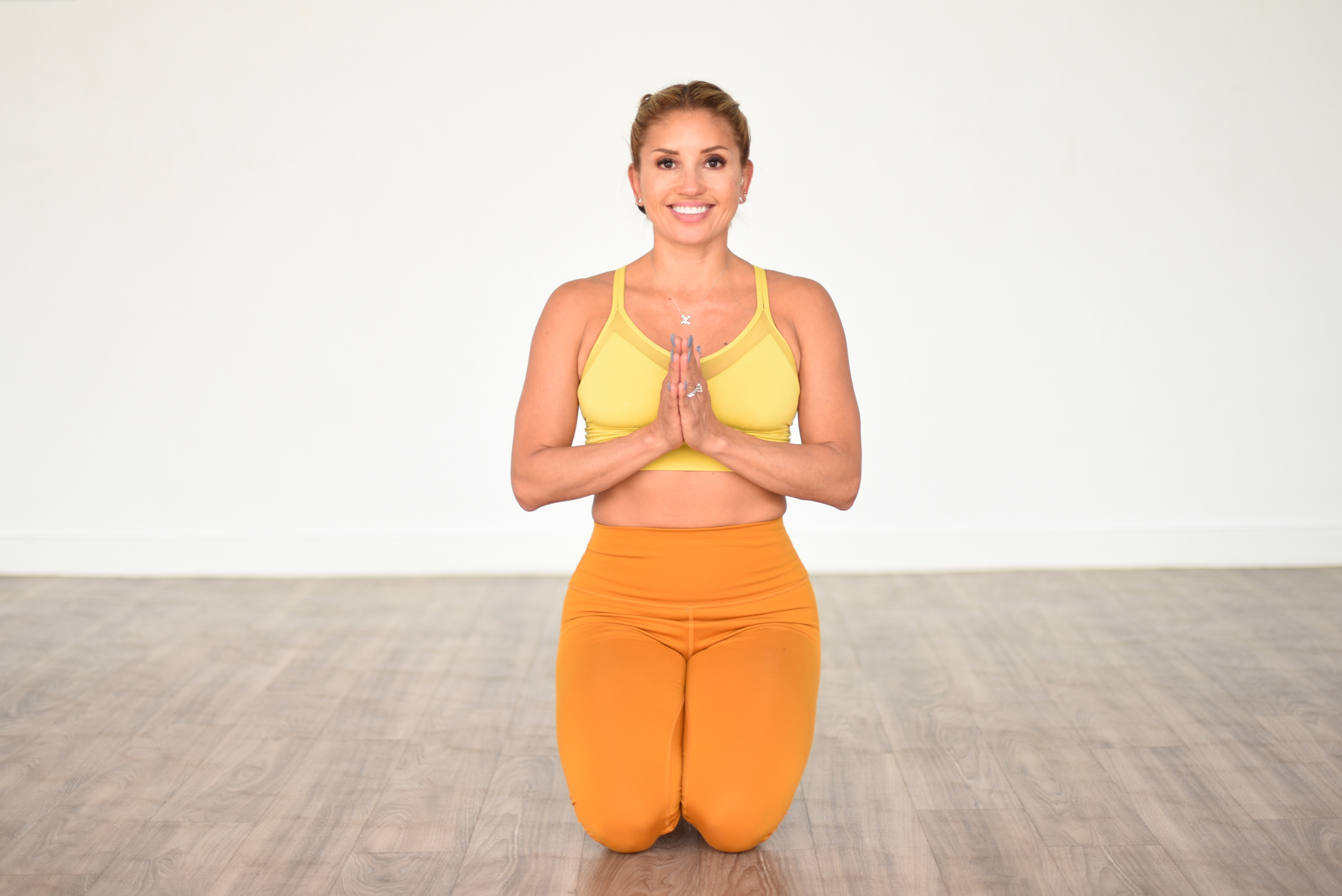
Vinyasa can be catered to a wide variety of levels. Often times when you go to a studio or a gym for yoga classes, they are in the power or flow style. There isn’t as much instruction as a more beginner level class and they often move very fast.
The main idea of vinyasa yoga is to synchronize breath to movement. This leaves a lot of options open for catering to different students. A teacher can sequence more simple movements together in order to make the class appropriate for beginners or people who want to move slower.
The Online Classes on YourBuddhi Are For All Levels.
On our classes page, we have a filter called “class type.” Here you’ll see classes such as vinyasa, slow flow, Buddhi flow, etc. Slow flow classes are vinyasa classes for beginners. The postures and transitions are more accessible for people who aren’t quite ready for vinyasa or Buddhi flow.
Hatha Yoga vs. Vinyasa Yoga
On yourBuddhi we refer to hatha yoga classes as slow flow. Hatha yoga classes are traditionally basic level yoga that introduce the fundamental aspects of posture based yoga. This is a great place to start if you want to try online yoga.
Slow flow is a beginner style vinyasa class. Both types are a breath to movement meditation in motion. Slow flow are better for beginners and vinyasa classes tend to be more physically challenging. There are several key differences that distinguish vinyasa classes from slow flow classes.
Hatha Yoga Classes Teach Simple Postures
There are hundreds of different yoga postures with multiple variations. Hatha and slow flow classes introduce the basic poses from each of the different groups. There are about five categories of poses that are important for yoga newbies to understand.
You’ll see different variations on the groups of poses, but essentially these are what they are: standing, backbends, forward folds, inversions, arm balances, hip openers and core exercises. Slow flow and haha classes will give you a foundational understanding of the basic postures from each group.
Vinyasa classes introduce more difficult postures from each category as well as different variations that often require more strength and flexibility. Once you have mastered the more basic versions of common yoga poses, you’ll feel more comfortable to try the variations offered in vinyasa.
Hatha Yoga Classes Have Simpler Transitions Than Vinyasa
The transitions from one pose to the next are more simple in a hatha or slow flow class. Transitions are almost a pose in and of themselves. One must engage the core and stay very aware of the body as you travel from one movement to the next.
Hatha classes will keep these transitions simple and accessible for people with limited stability and mobility. Once the simpler transitions are mastered, students can try the more advanced flowing motions that are found in vinyasa classes. Mastering difficult transitions is great for body awareness and a strong, functional physique.
Hatha Yoga Classes Have More Detailed Instruction
Vinyasa classes flow to the rhythm of the breath. There are many parts of the sequence where the pace flows one breath per movement. Inhale the arms go up, exhale the body folds forward and so on. The teacher guides the breath to movement flow to create a steady rhythm.
This has many benefits, including a profoundly calming effect on the nervous system. However there is less time for to give students detailed instruction on the individual postures themselves. With Hatha classes, students hold poses longer, taking several breaths in one before moving on to the next.
When you hold a posture for a longer period of time it becomes more familiar. As a result, students can feel the pose and take several breaths in this new shape. The teacher has a chance to point out several key points about the pose that are important for new students to understand.
One Style is Not Better Than The Other
There is no hierarchy in yoga. Vinyasa is not “better” than slow flow. It just tends to be more physically challenging. Students can always practice Hatha without ever doing vinyasa classes. Regardless of how difficult the class is, as long as you’re breathing, you’re getting great benefit.
Difference Between Power Yoga and Vinyasa Yoga
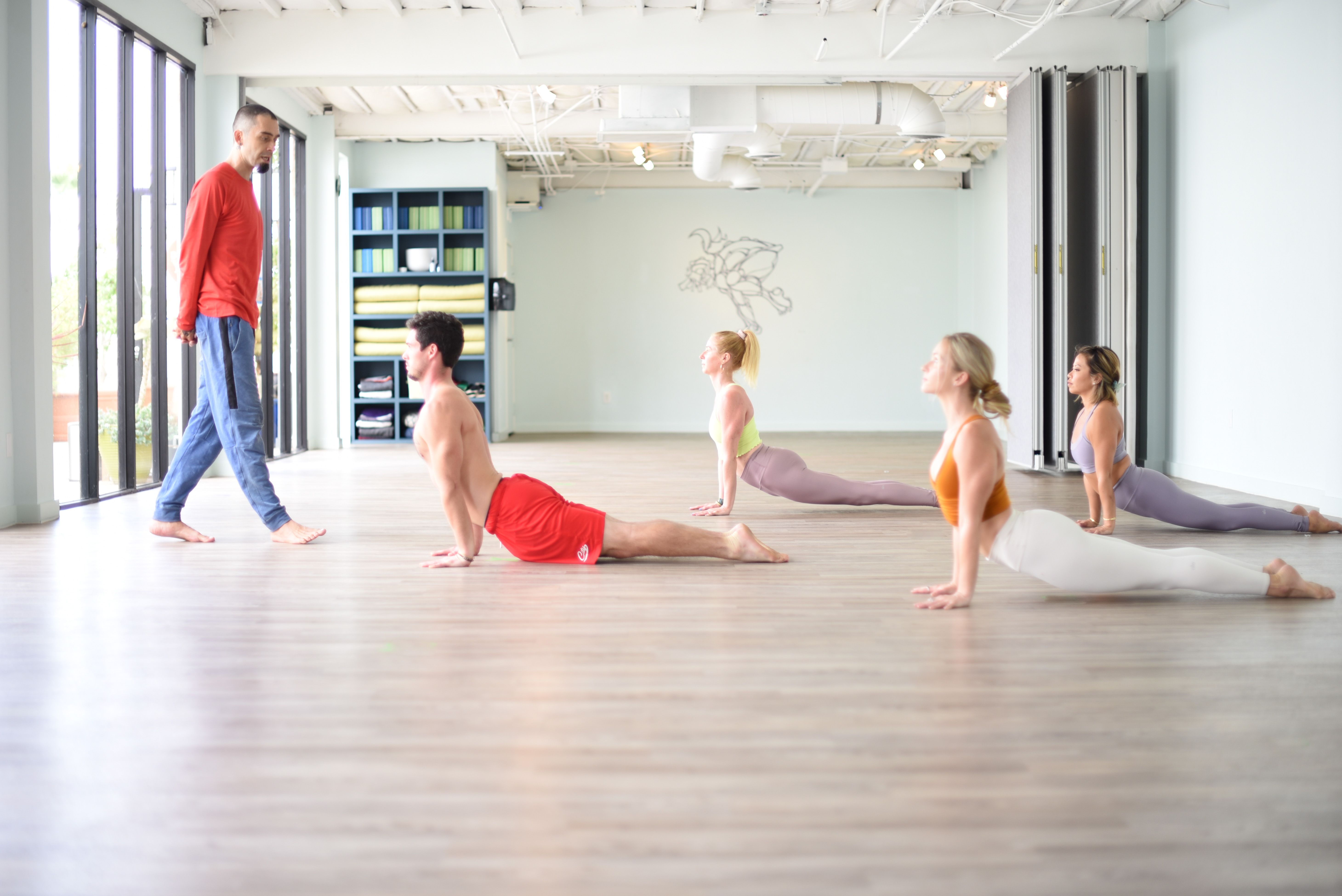
Power Yoga is similar to vinyasa but is a very intense workout. The postures are in a breath to movement sequence and flow smoothly just like vinyasa flow yoga. However the class creates a lot of internal heat with the goal of strengthening the body and promotes endurance.
Firstly, Power Yoga is great for people who like to be taken to their edge both physically and mentally. Secondly, students gain great strides in strength, flexibility and overall fitness when they practice power yoga consistently. Power Yoga is high octane vinyasa yoga!
What Is Hot Vinyasa Flow Yoga?
Hot vinyasa flow is the same as vinyasa yoga but the temperature in the room is turned up to 90 – 100 degrees. Inspired by Bikram Yoga, hot vinyasa yogis rely on the external heat in the room to help loosen up the muscles and joints.
Most vinyasa and power yoga classes create enough internal heat to open up the body, external heat is not necessary. However many people love to pour sweat during a yoga class. It makes them feel more detoxified and more open.
FAQs
What is Vinyasa Yoga?
Does It Count As Exercise?
Yes. This style of yoga will strengthen the entire physique by building long, lean functional muscle. It does not count as cardiovascular exercise because the breath should be deep and steady the entire time. The heart rate does not really elevate enough to consider it cardio.
Flow yoga is also a great bodyweight exercise. Students use their own weight for resistance in many different postures including planks, handstands and other arm balances. It creates balance on both sides and is excellent cross training for other activities such as golf, tennis and other sports.
Can I Do It Everyday?
Yes! Yoga is highly beneficial as a daily practice. It doesn’t need to be a full hour practice, even just 20 minutes is a game changer. This time spent focused on the body and breath is a great way to meditate while getting all of the other wonderful benefits.
Is Vinyasa Yoga OK For Beginners?
On yourBuddhi, we recommend our slow flow classes for beginners. They are taught in the vinyasa style with a breath to movement flow. However the postures, transitions and instructions are more suited for beginners than our vinyasa or Buddhi Flow classes.
How Do I Start Vinyasa Yoga?
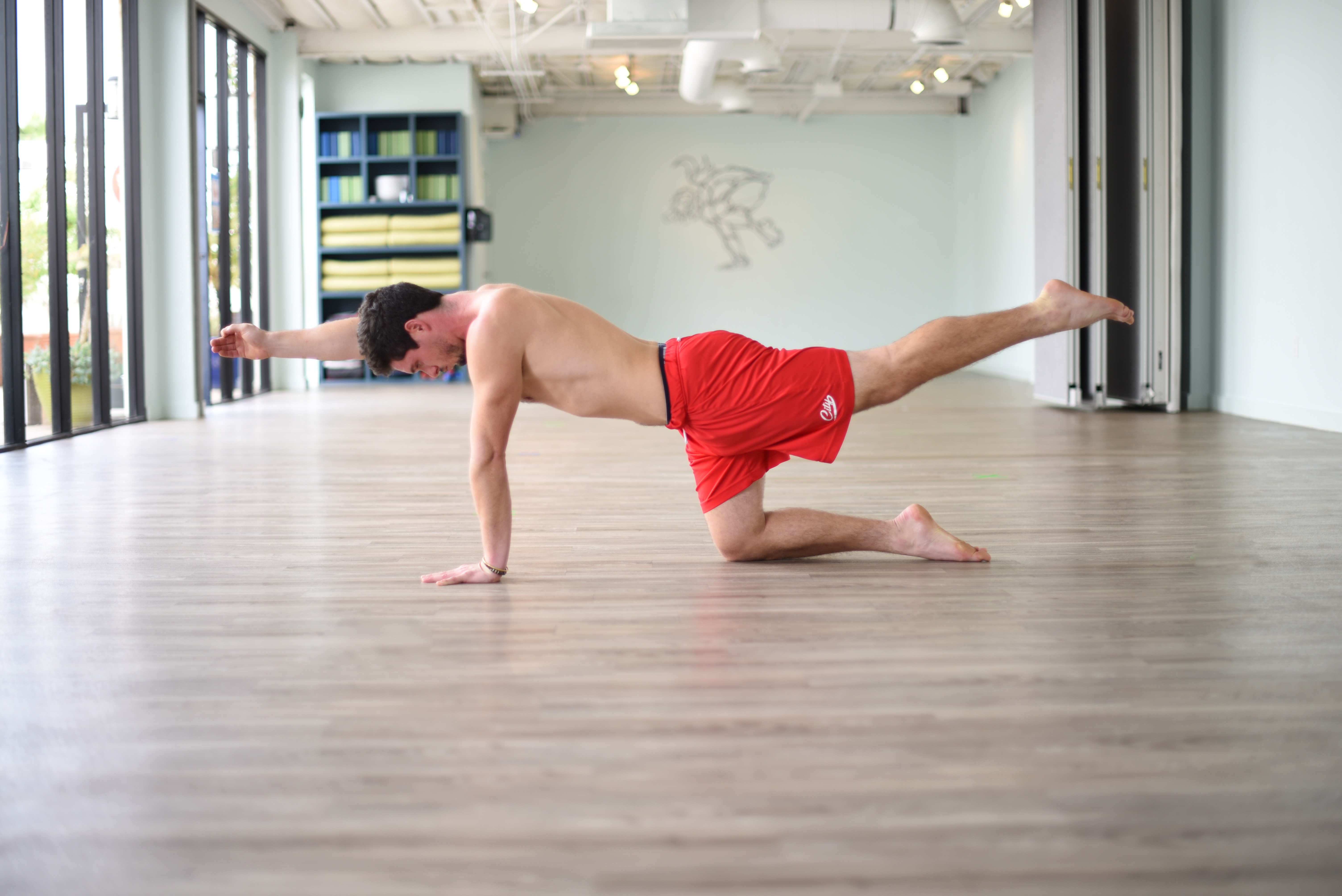
Now that you know everything there is to know about Vinyasa Yoga, it’s time to start practicing it! If you are brand new to yoga and don’t know anything about it, we recommend starting with our slow flow and beginner flow class page.
If you have an athletic, dance or gymnastics background, you may want to jump right in to our Buddhi flow and vinyasa classes. If you want to jump right in, try our Intro to Power Vinyasa Class. This class will highlight the key points for you to understand.
Even if you feel like you are completely ready to dive in to a regular vinyasa class, it’s always beneficial to create a foundation. Our Teach Yourself Yoga class is a nice place to start. For something even more basic and a little shorter try the Series A & B Class.
When you first begin a yoga practice, small and easily attainable goals are best. Commit to one to two classes per week for one month. You will definitely feel a difference in your body, breath and overall mood. The benefits are many and once you experience them you’ll never go back.
Sign up today and get your first week free. After that it’s just $29/month. You’ve got nothing to lose! Making yoga a consistent part of your life is easy with yourBuddhi. We’re for you if you have any questions! Shoot us an email and we will get right back to you.

Leave a Reply
You must be logged in to post a comment.